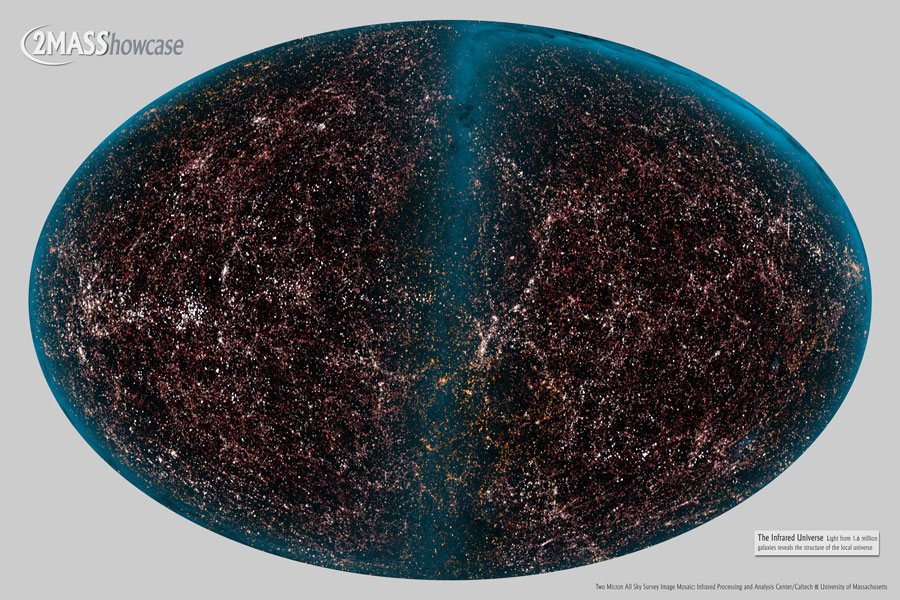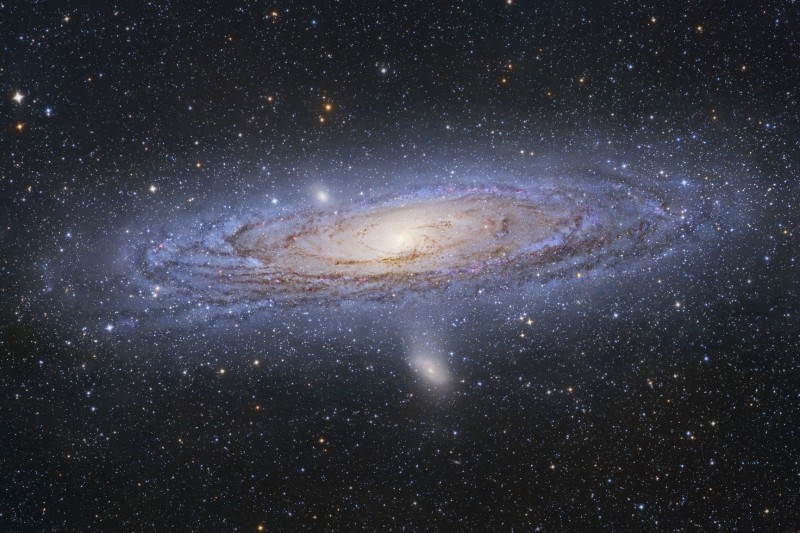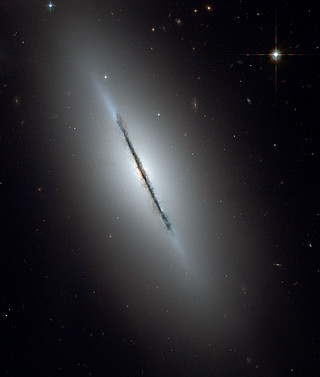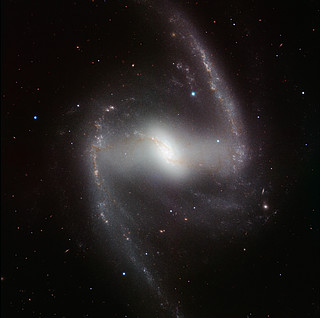In the last post (It’s Full of Galaxies) we saw an infrared image from the Herschel space telescope looking at a tiny piece of the cosmos revealing thousands of galaxies 10 – 12 billion light-years from us. The image below is also an infrared image, but it is a view of millions of galaxies as taken by the 2MASS (Two Micron All Sky Survey) looking across the night sky.

The blue band in the image comes from the stars in our own galaxy. Note that the distribution of galaxies is not uniform, as one might expect but there are clusters, strings and webs of galaxies. These structures are remnants of the big bang and the gravitational attraction between matter and the mysterious dark matter. Think about this: All of the matter we can see and account for in the Universe only adds up to about 4-5% of the total mass of the Universe!
The 2MASS survey was conducted using two 1.3 meter telescopes, one in Arizona and the other in Chile, imaging the sky at 3 separate frequencies in the near infrared. Imagine what this would look like if we were able to use telescopes in space that are above the filtering effects of our atmosphere in the infrared.
Check these links for more information and a larger image.
Till next time,
RC Davison





